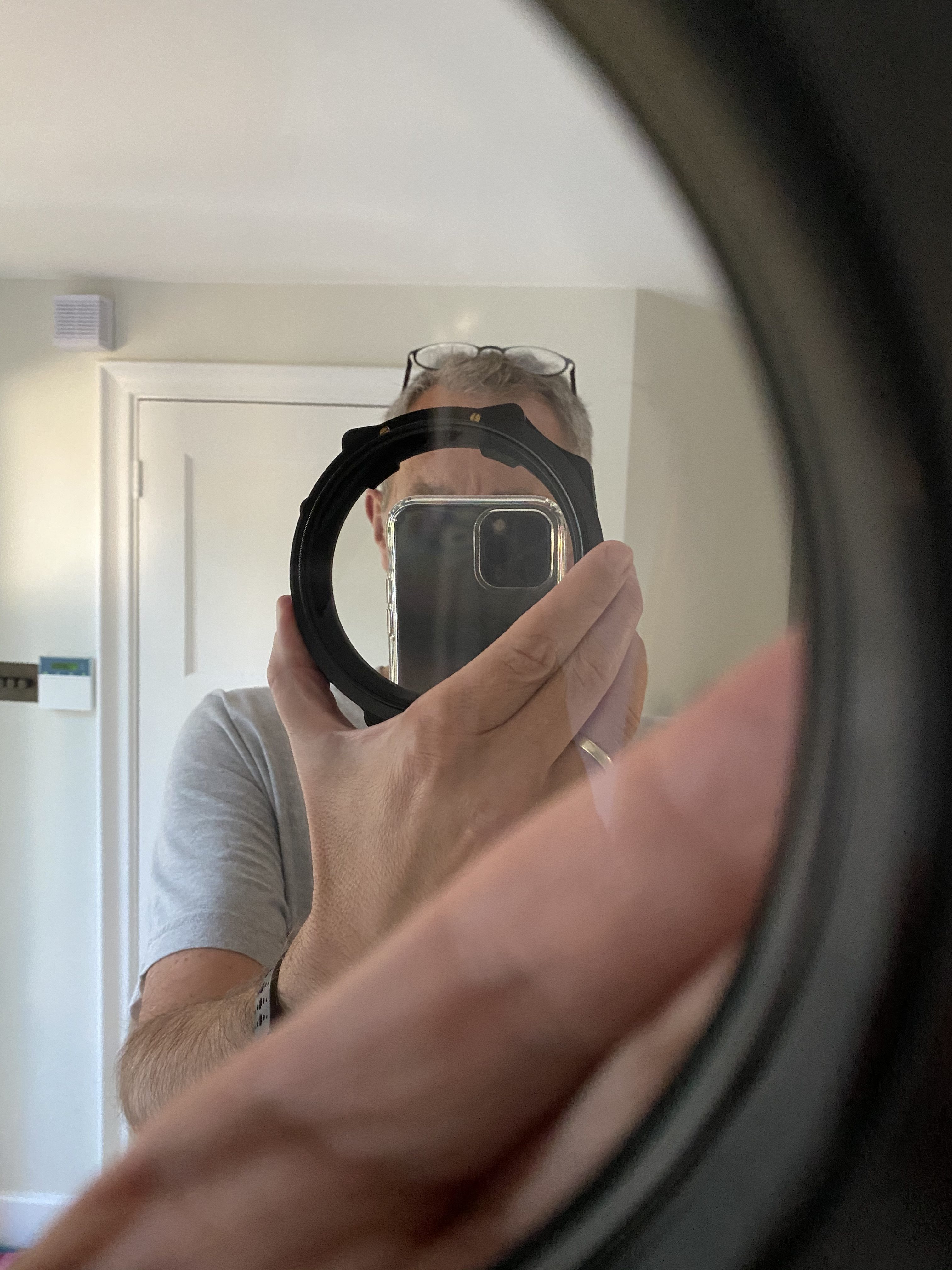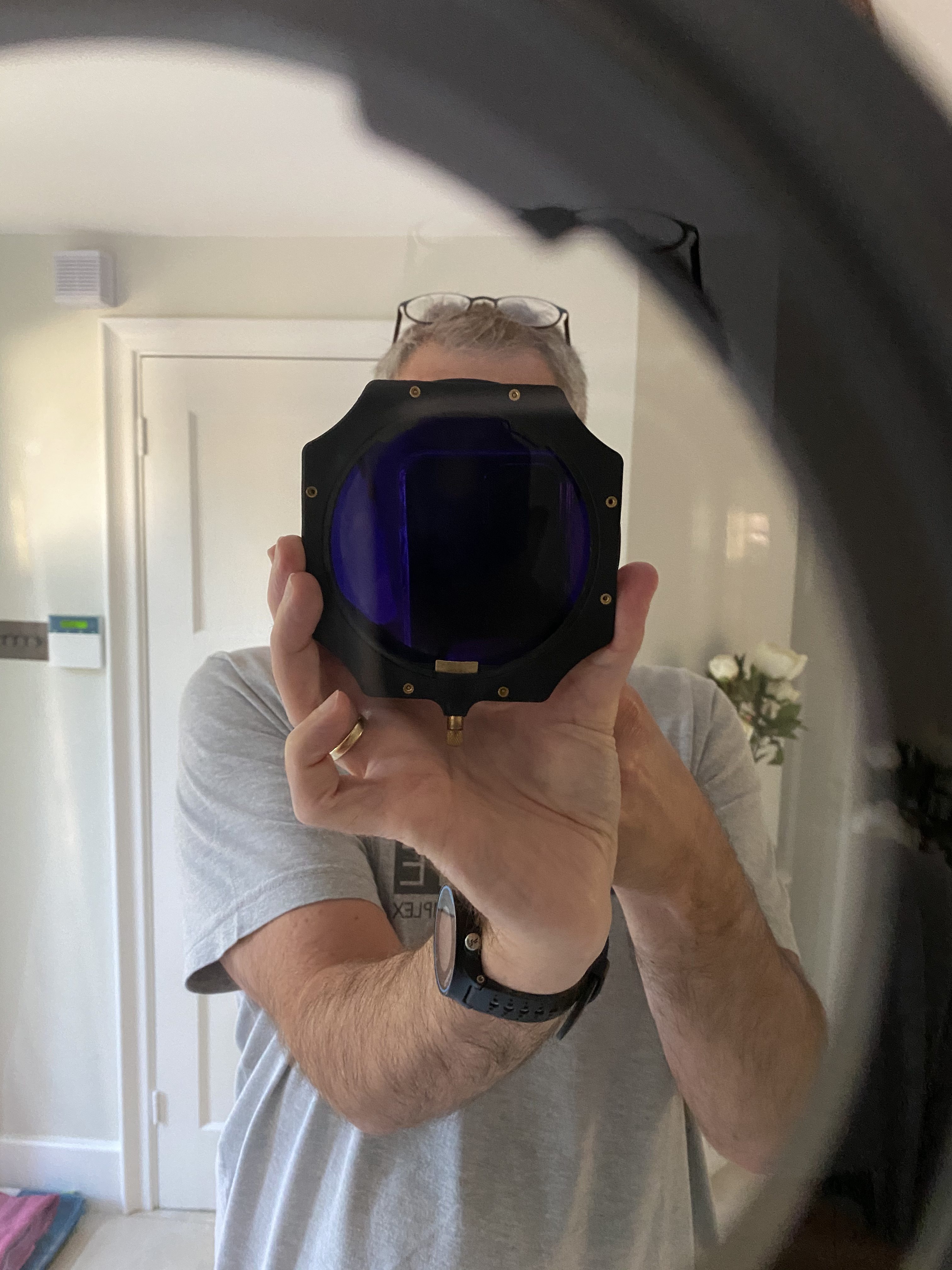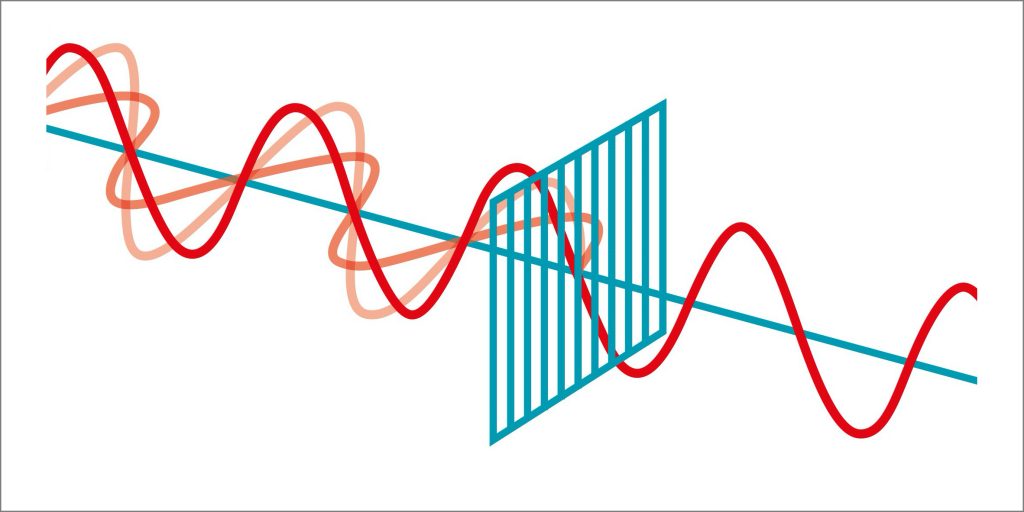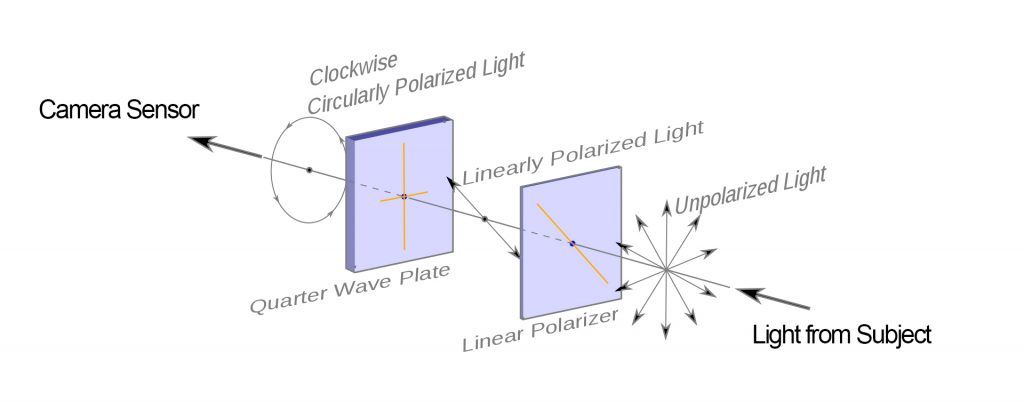“Do you know, polarisers [circular polarisers] only work in one direction,” clearly a myth propagated by someone whose education in the arts had kept them away from even basic physics.
However, it’s true. What’s more if you hold a circular polariser up to a mirror, just a few inches from your eye, it’s clear the correct way round and dark the wrong way round. Me doing this below:
 |  |
| Looking into a mirror with the polariser the correct way round – clear | Looking into a mirror with the polariser the wrong way round – dark. |
This doesn’t happen with a linear polariser which works exactly the same either way round. What’s going on?
Explanation below.
Weirdness
In my recent “LAB Colour” post I stated that the world according to physics is a complicated place and posited the caveat that what followed was limited by my knowledge and the point I was trying to make. Polarisation adds another layer of complexity and the same caveat applies.
To appreciate the weirdness (cleverness) of a circular polariser one needs first to understand the boring normal-ness of linear polarisation and the problems this causes for DSLR cameras.
When looking, toward the sun, at water in a lake, your eyes receive light that has bounced off the surface of the water (predominantly polarised horizontally) and light that has penetrated the water (predominantly polarised vertically). A linear polariser, as found in sunglasses or the less expensive camera filters, will filter out the horizontally polarised light and allow you to better see into the water.
Now the mirror (“reflex mirror” in the diagram below) on most DSLR camera is semi-translucent to allow some light through to sensors that control auto-focus and metering. Guess what, light polarised in one direction has more of a tendency to bounce off this mirror and light polarised in the other, to pass through. So polarised light, from a normal linear polariser, can really mess with your camera.

Magically, the same problems do not occur when you use a “Circular” polariser, and you are still able to see into water (so long as you have it the right way round).
Science
Horizontal and vertical polarisation is of course a simplification. Think about making waves in a rope. Up-and-down, side-to-side, any degree of diagonal-to-diagonal; and you produce nice linearly polarised waves going down the rope. But what if you start winding your rope round in circle to produce corkscrew-like waves? In this case, you’ve created circularly polarised waves. There are two types: clockwise and anticlockwise.
Light from most natural light sources, including the sun, is evenly and randomly polarised both horizontally and circularly. Linear polarisers filter this random polarisation to produce light that is polarised in a single, unmoving, flat plane.
Going back to our rope analogy: if you pass the rope through the vertical bars of a gate, so that it can move only up-and-down at this point (not side-to-side); however you move the rope one side of the gate, the wave in the rope the other side of the gate will always be just up-and-down. The gate is a linear polariser.

There are circular polarising filters which differentiate between clockwise and anti-clockwise polarisation. THESE ARE COMPLETELY POINTLESS FOR MOST PHOTOGRAPHIC PURPOSES. The only practical use I know of is for 3D glasses as worn at the cinema or with 3D TVs, where circular polarisation is more practical as it doesn’t require the wearer to keep their head vertical.
The next section reveals why “circular” polarisers are considered a good thing and how they work in practice. In the meantime, I hope I have explained what circular polarisation is, i.e., corkscrew waves – trust me, I didn’t know any of this two weeks ago.
There are many YouTube videos on polarisation, one of the best and most accessible is “Polarization of Light: circularly polarized, linearly polarized, unpolarized light” by Eugene Khutoryansk
The Big Reveal
Drum roll …..
what’s called a “Circular polariser” is actually a linear polariser PLUS a circular polariser
da dh!
[Technically, a linear polariser in front of a quarter phase plate that induces a quarter phase shift to create a circular or corkscrew polarisation in previously linearly polarised light. See YouTube referenced above for more detail.]

This is a GOOD THING because:
- the front linear filter, works as it normally does, favouring non-reflected light for example
- then the circular polariser, effectively re-randomises the polarisation so that what hits the camera’s semi-translucent mirror is transmitted/ reflected in the normal proportion, and the camera’s auto-focus and metering work normally.
Conclusion
If you don’t need a circular polariser, e.g., you have mirrorless camera, buy the cheaper and simpler linear polarising filter. The simpler solution will also yield a brighter, better quality image as you are no longer shooting through the quarter phase plate.
… and to think, a few weeks ago I thought the difference between a linear and circular polariser was its shape.


So right ………so ummmmm ………er right……… as I understand this when I move to mirrorless (seems inevitable as manufacturers phase out mirrors) my 3 very expensive circular polarisers become redundant, and I can reuse older linear ones (assuming I can find them)?
Kevin,
Thank you for your comment.
It will be interesting to see how the market moves. I suspect that common sense and understanding of the science will lag behind the belief that more expensive = better, which will support the market for circular polariser for a while.
When you do move to mirrorless, your old circular polarisers will still work just as well as they did on your DSLR. It’s just that you will be pointlessly shooting through a quarter phase plate which can only degrade the eventual image.